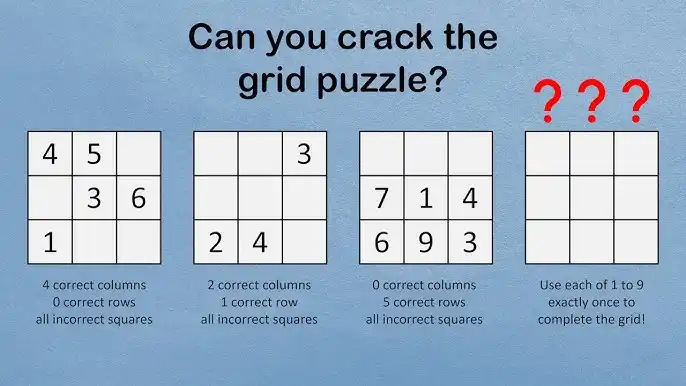As Large Language Models (LLMs) become more integrated into complex workflows, evaluating their ability to “think” rather than just “know” is crucial. Standard prompts can confirm an AI’s vast store of knowledge, but they often fail to reveal its capacity for inference, deduction, and constraint satisfaction. Crafting targeted logical puzzles is a powerful method to stress-test these abilities, providing deep insights into the model’s true reasoning capabilities.
Table of Contents
This guide outlines the core principles for designing effective puzzles that can accurately benchmark and help you understand the strengths and weaknesses of any AI model.
🧭 How to Keep Rules Clear and Consistent
The primary goal is to test the AI’s logical faculties, not its ability to parse tricky or ambiguous language. Therefore, the foundation of any good puzzle is a set of explicit, self-contained, and non-contradictory rules.
- Eliminate Linguistic Ambiguity: Avoid idioms, metaphors, and culturally specific references. The puzzle should be solvable with pure logic, without requiring external or assumed knowledge.
- Ensure Self-Containment: All the information required to solve the puzzle must be contained within the prompt. The AI should not need to guess or access its general knowledge base.
- Maintain Consistency: Every rule must be able to coexist with every other rule without creating a logical contradiction.
| Poor Puzzle Design (Tests Language/Bias) | Good Puzzle Design (Tests Pure Logic) |
| “A man and his son are in a car crash. The man dies. The son is rushed to the hospital, but the surgeon says, ‘I can’t operate on this boy, he is my son!’ How is this possible?” (This is a riddle that relies on overcoming a common gender bias, not a deductive puzzle.) | “There are three boxes: A, B, and C. One contains a prize. The other two are empty. Each box has a label. Exactly one label is true; the other two are false. – Box A’s label says: ‘The prize is in this box.’ – Box B’s label says: ‘The prize is not in this box.’ – Box C’s label says: ‘The prize is not in Box A.’ Which box holds the prize?” (This is a pure logic problem with clear, un-ambiguous rules.) |
⚙️ How to Use Multiple Interdependent Variables
A simple puzzle might test a single logical step. A great puzzle forces the model to build a mental “matrix” of possibilities and use each new piece of information to eliminate variables across multiple categories. The more the variables are interconnected, the more difficult the puzzle becomes.
Key Components of a Logic Puzzle:
- Entities: The subjects of the puzzle (e.g., three people: Alex, Ben, Chloe).
- Attributes: The properties to be assigned to each entity (e.g., three job titles, three office locations).
- Constraints: The rules that link entities and attributes (e.g., “The person in the corner office is not the Engineer”).
- Conditional Rules: “If-then” statements that create deeper dependencies (e.g., “If Alex is the Manager, then Chloe must be on the second floor”).
| Puzzle Prompt: The Office Assignment |
| ` text |
This type of puzzle requires the AI to track six different pieces of information (Daniel’s role/floor, Emily’s role/floor, Frank’s role/floor) and update the possibilities as it processes each clue.
📌 How to Request and Analyze Step-by-Step Reasoning
Often, the final answer is the least important part of the evaluation. The real insight comes from seeing how the model arrived at its conclusion. Forcing the model to show its work, a technique known as Chain-of-Thought (CoT) prompting, is the most effective way to analyze its reasoning process.
Prompting for Chain-of-Thought
Simply add a directive to your prompt that asks the AI to explain its thinking.
- “Think step-by-step.”
- “Let’s work this out in a logical sequence.”
- “Before giving the final answer, explain your deductions from each clue.”
Analyzing the AI’s Response
When you review the step-by-step output, look for these specific points of failure or success:
- Clue Interpretation: Does the model correctly understand and paraphrase each constraint?
- Valid Deduction: Is each new conclusion it makes a logically sound consequence of the clues? (e.g., From Clue 3, “Emily is the Manager,” and Clue 2, “The Analyst works on Floor 1,” can it correctly deduce that Emily does not work on Floor 1?)
- State Tracking: Does it successfully keep track of all possibilities? When it eliminates a possibility, does that elimination propagate correctly across all other variables?
- Error Identification: Where exactly does the first logical error occur? Identifying this breakpoint is the key to understanding the model’s limitations.
By designing puzzles with clear rules, interconnected variables, and a requirement for step-by-step reasoning, you can move beyond surface-level interactions and gain a much deeper, more accurate understanding of an AI’s cognitive abilities.
More Topics
- How to Compare and Choose Modern Shells Beyond Bash
- How to Organize Large Photo Collections with KPhotoAlbum
- How to Build a Physical Computing Project with Raspberry Pi
- How to Safely Automate Sysadmin Tasks with Bash Scripts
- How to Get Started with Apache OpenServerless
- How to Install and Customize Deepin 25
- How to Create AI-Generated Images That Match Your Vision

